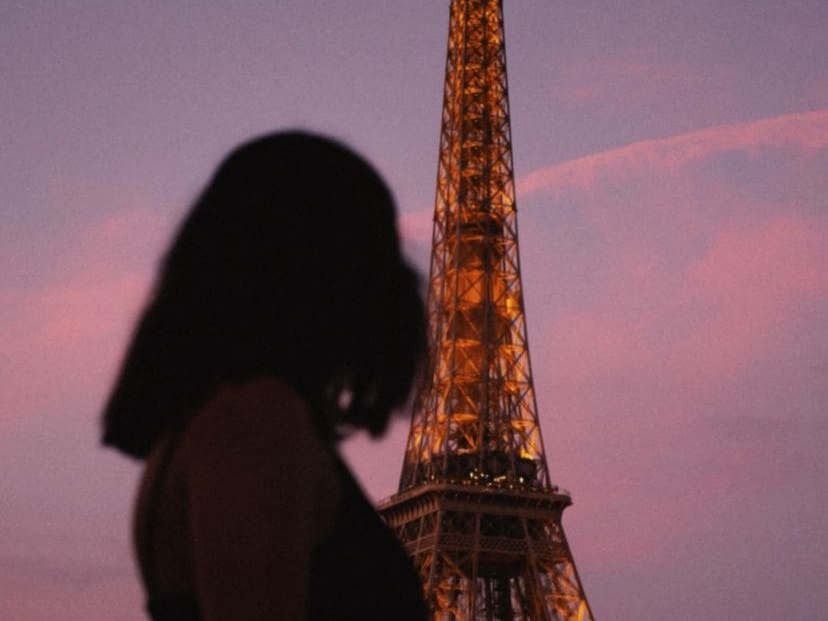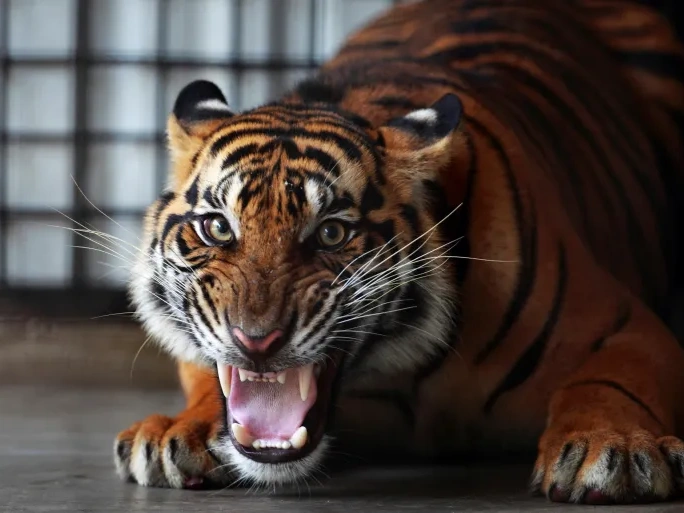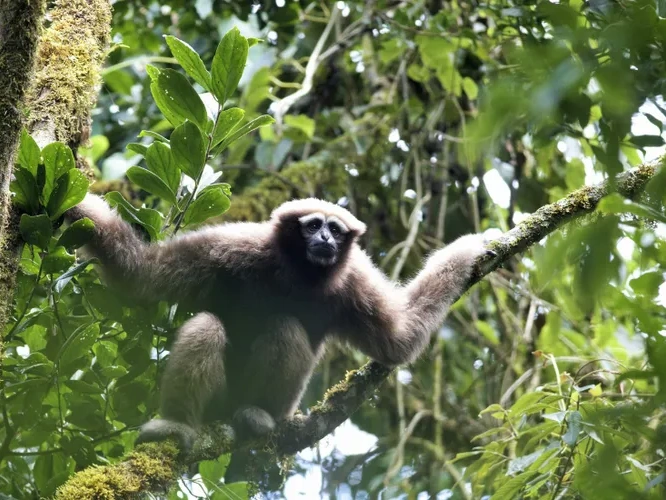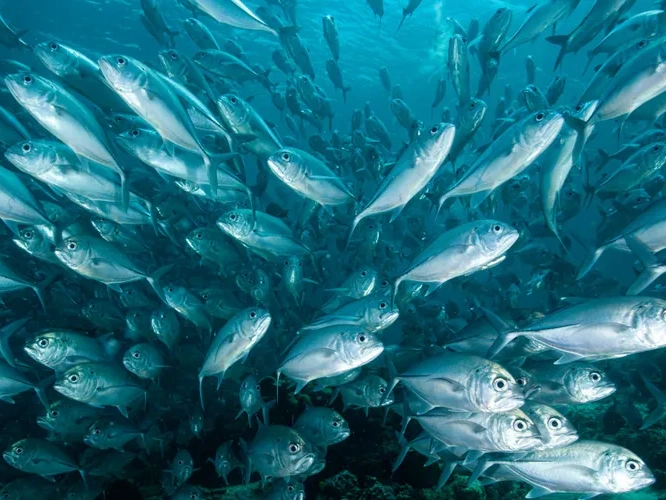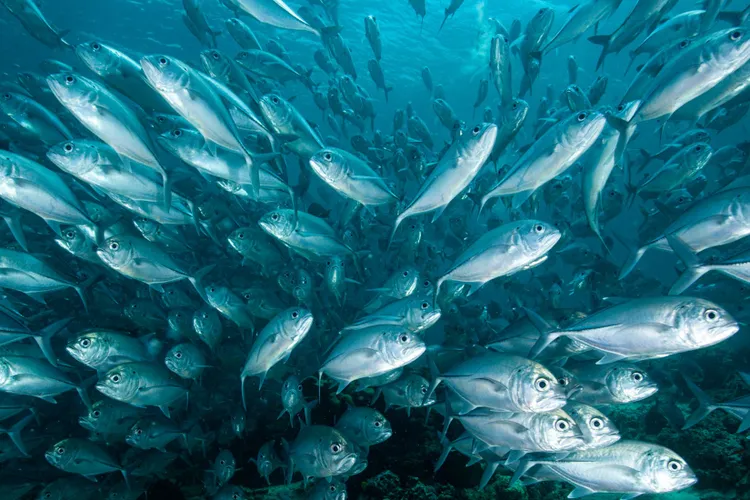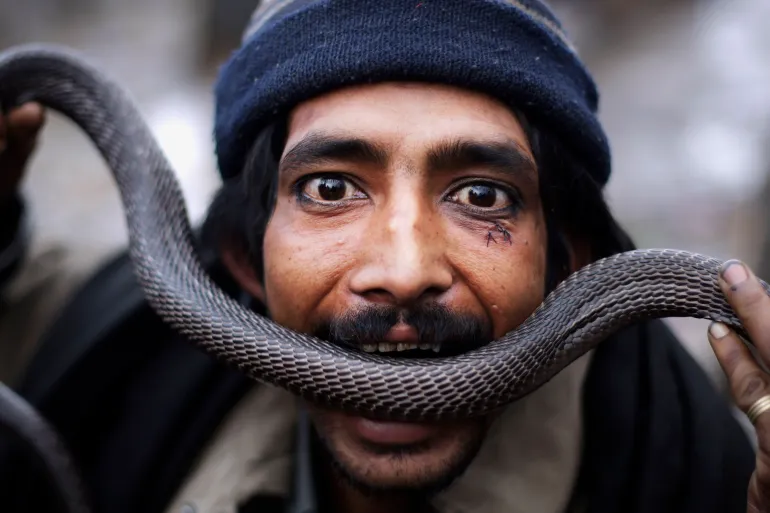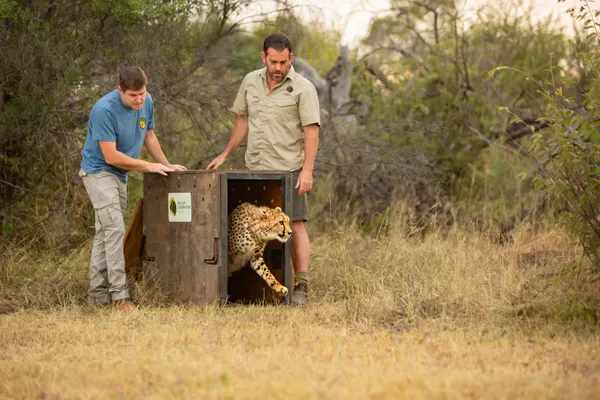Video footage shared on social media shows a polar bear with “T-34” spray-painted in black on its side and has raised alarm among Russian wildlife experts.
These experts warn that the black markings could affect the bear’s ability to blend in with its white surroundings and hunt for food.
An official investigation is under way, with hopes to determine exactly where in Arctic Russia the video was recorded.
The T-34 was a tank that played a vital role in the Soviet Union’s defeat of Nazi Germany in World War Two.
The footage was posted on Facebook by Sergey Kavry, a member of the World Wildlife Fund (WWF) nature organisation, and then shared by local media.
Kavry said:
“I don’t know the details of which region, district, or vicinity this [footage] was taken,
If it’s a military lettering theme… that is some kind of perverse disrespect for history.”
He also explained that the video had been shared on a WhatsApp group for the indigenous people of the Chukotka region in Russia’s Far East, and that scientists monitoring wildlife in the area would not have branded the bear this way.
Daria Buyanova, press officer for WWF Russia, told the BBC that seeing the images was “quite a shock” and that the inscription “looks like a bad joke”.
Scientists agree that it is unlikely the bear could have been painted without it being sedated.
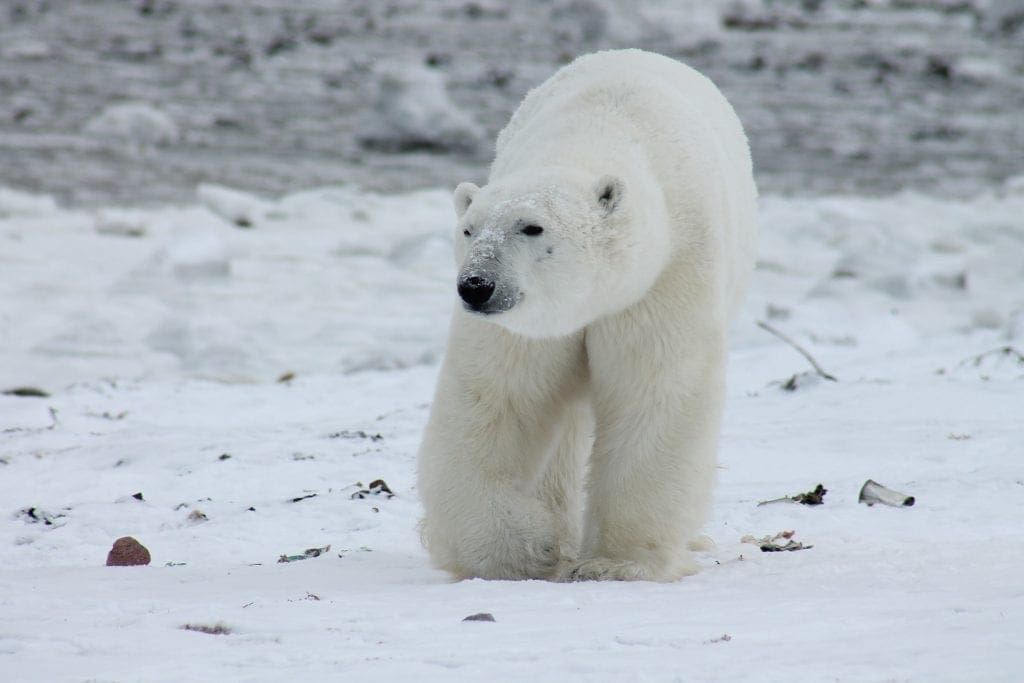
A scientist at the Institute of Biological Problems of the North, Anatoly Kochnev, said the bear could not have been mobile, or at least must have been quite still while it was being sprayed because “the characters are evenly written and are all the same size”.
He suggested the incident may have taken place in the remote Russian region of Novaya Zemlya, where a team of specialists had earlier sedated polar bears that had been venturing into human-populated areas.
Kochnev said it could take weeks for the markings to wash off, and this could cause problems for the animal, which relies on its white coat when hunting prey in the Arctic snow and ice.
Russian media speculates that the stunt is linked to local anger at a rise in the number of polar bears coming into communities in Arctic Russia.
In February, a state of emergency was declared in the Novaya Zemlya region over the appearance of dozens of polar bears in several towns and villages in the Arctic.
SOURCE: BBC
STAY UPDATED
Join our community of keen travellers, wildlife enthusiasts and adventure seekers.
Hunting For The ‘Extinct’ Indonesian Tiger In Indonesia
April 18, 2024
The Quest for the Javan Tiger: A Glimmer of Hope in Indonesia
In the lush, verdant wilderness of West Java, Indonesia, a remarkable and potentially groundbreaking discovery has rekindled hope for a species long thought to be extinct: the Javan tiger.
The news broke following an intriguing study conducted by Indonesia's National Research and Innovation Agency (BRIN) and published by Cambridge University Press. It centered on a single strand of tiger hair found in 2019, snagged on a fence near Sukabumi city.
This finding has spurred a nation-wide hunt, leveraging camera traps and DNA sweeps, to uncover whether the Javan tiger still prowls the Indonesian forests.
The hair, with genetic markers pointing to the Javan tiger, presents a thrilling scientific mystery. According to the research, local resident Ripi Yanur Fajar first noted the hair along with footprints and claw marks at a plantation.
This evidence has not only captured the imagination of the local community but also mobilized the country's environmental efforts.
Satyawan Pudyatmoko, a ministry official overseeing conservation, emphasized the cautious optimism permeating the scientific community, stating, "The research has sparked speculation that the Javan tiger is still in the wild."
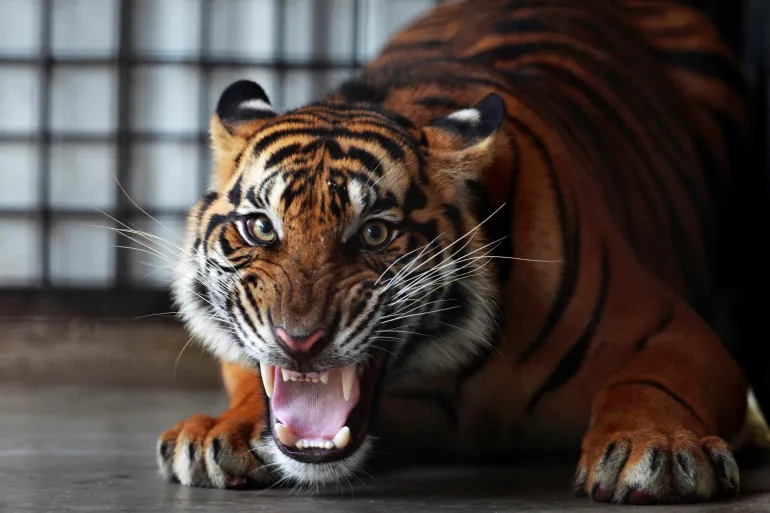
The Conservation Conundrum
The potential rediscovery of the Javan tiger is not just a scientific curiosity—it's a conservation imperative. The Javan and Balinese tigers were declared extinct in the 1980s and 1940s, respectively, victims of relentless poaching and habitat destruction.
Today, only the Sumatran tigers remain, with fewer than 400 individuals in the wild, as estimated by the International Union for Conservation of Nature. The survival of the Javan tiger could signify not only a miraculous beat against extinction but also a critical new chapter in Indonesia's environmental policy.
However, this pursuit is fraught with challenges. Muhammad Ali Imron, head of the WWF Indonesia’s forest and wildlife program, expressed concerns about publicizing the findings too widely.
The fear is that drawing too much attention might attract poachers, turning a conservation opportunity into a crisis. As such, the balance between excitement for discovery and the practicalities of protecting potentially surviving tigers is delicate.
Reflections on Conservation Efforts
The story of the Javan tiger is a poignant reminder of the fragility of our planet's biodiversity. It underscores the urgent need for robust environmental policies and proactive conservation strategies.
If the Javan tiger does indeed still exist, it will become a symbol of hope and a testament to nature's resilience. But it also underscores the obligations of not only governments but also local communities and international bodies to safeguard these treasures.
The efforts to confirm the existence of the Javan tiger continue, blending hope with scientific rigor. As researchers press on, supported by the Indonesian government and international conservation groups, the story of the Javan tiger could either be a remarkable tale of survival or a somber epitaph for a species lost to history.
Either outcome will undoubtedly shape conservation dialogues globally, reminding us of our enduring responsibility to the natural world.
Source: Al Jazeera
‘Skywalker’ Ape Discovered In Jungles Of Myanmar
April 18, 2024
The Echoes of Survival: The Skywalker Gibbons of Myanmar
In the verdant jungles of Myanmar, a recent discovery has not only expanded our understanding of biodiversity but has also ignited hope for conservationists globally.
The Skywalker gibbons, a species first identified in China in 2017 and named with a nod to the Star Wars saga, have now been confirmed to inhabit the remote forests of Myanmar.
This finding is a critical step in ensuring the survival of a species that mirrors the traits of resilience and uniqueness akin to their cinematic namesake.
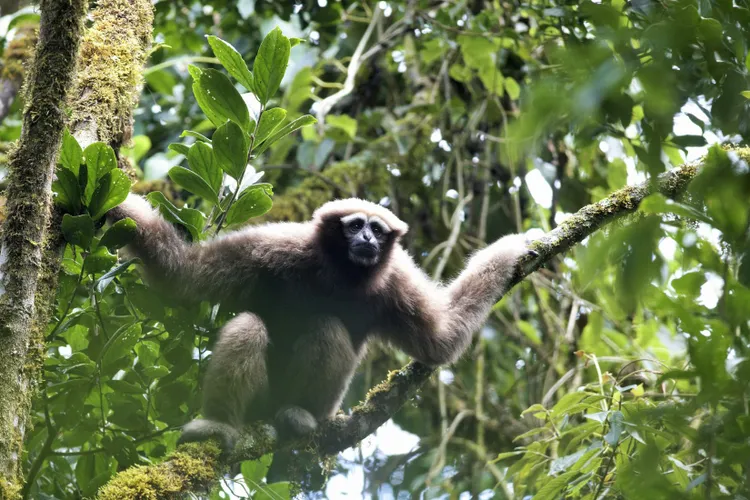
Discovery and Identification
The journey to this significant discovery began with acoustic monitoring of the gibbons’ haunting morning songs, a method that allowed researchers to pinpoint their presence without direct visual contact.
This non-invasive technique captures the essence of modern conservation efforts—blending technology with traditional fieldwork.
The use of DNA analysis from discarded plant material further solidified the presence of 44 new groups of Skywalker gibbons in Myanmar, a testament to the meticulous and innovative approaches adopted by the research teams from Fauna & Flora and Nature Conservation Society Myanmar.
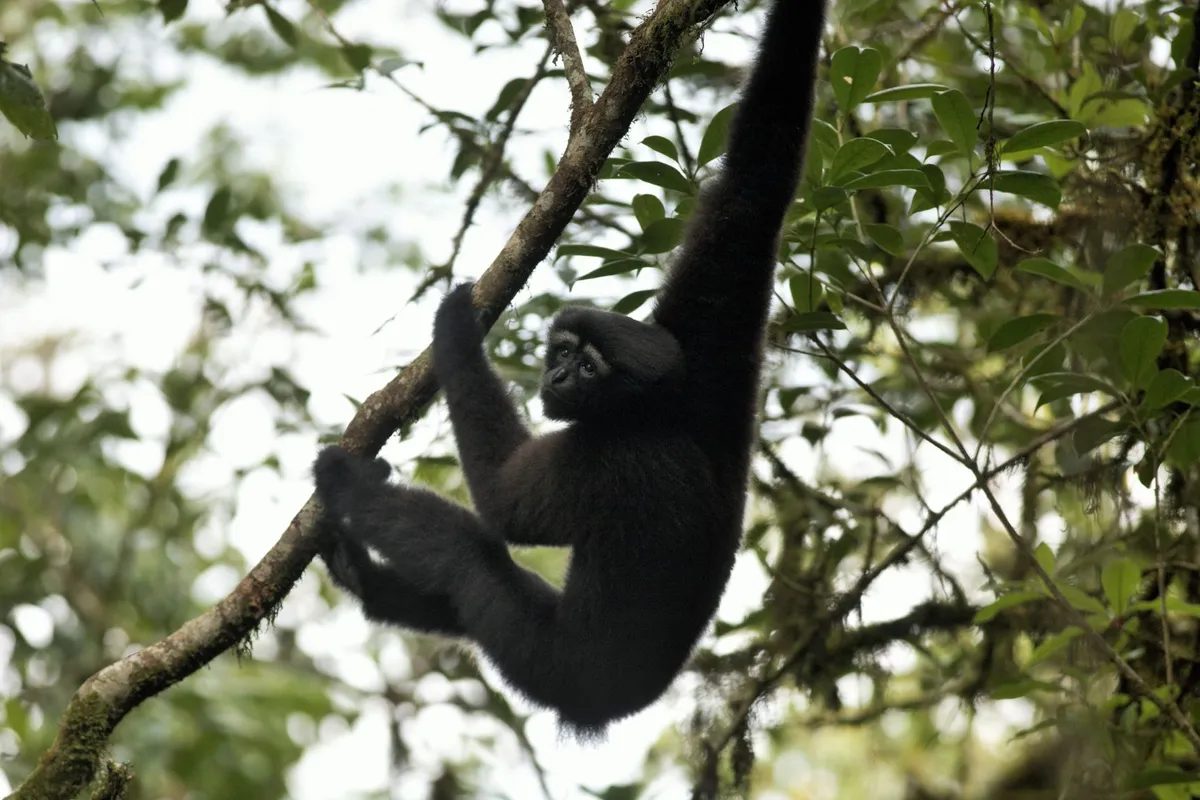
READ NEXT: GET TO KNOW THE SPIDER MONKEY
Characteristics and Challenges
Skywalker gibbons (Hoolock tianxing) are distinguished from their close relatives by subtle yet distinct physical differences such as thinner eyebrows and a darker beard, which are not just mere aesthetic details but are adaptive traits honed by evolution.
Despite their enchanting presence, these primates are under siege from an all-too-common enemy: habitat loss. With Myanmar's existing protected areas covering a mere 4% of suitable gibbon habitat, the challenges are daunting.
The forests that cradle these gibbons are vanishing, sliced away by deforestation and degraded by human encroachment.
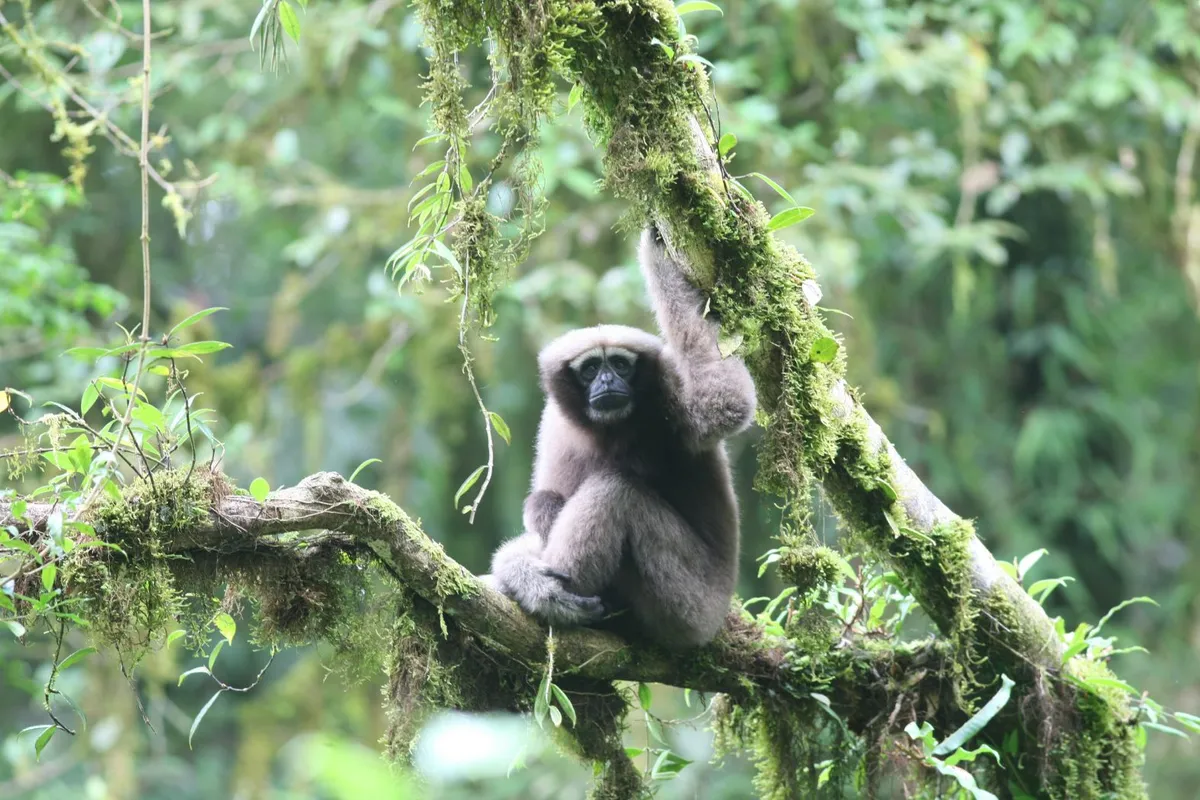
Conservation Efforts and Future Prospects
The discovery has sparked a broader conservation dialogue, emphasizing the need for a dual approach combining government-led protection with community-based conservation initiatives.
Local communities have shown a willingness to engage, with some expressing interest in establishing community protected areas and launching conservation awareness programs aimed at curbing poaching.
This collaborative spirit is essential, as the preservation of the Skywalker gibbon isn’t just about saving a species but about maintaining the ecological balance they help sustain.
The plight of the Skywalker gibbons serves as a poignant reminder of our intertwined destinies with the natural world. These creatures, with their distinct songs and familial groups, are not just inhabitants of their forests but are custodians of their ecosystems.
Protecting them is a moral imperative that transcends borders and species—a call to action to preserve the rich tapestry of life that, once unraveled, cannot be rewoven.
Source: Discover Wildlife
Silent Swimming Schools Of Fish Are Inspiring Submarine Design
April 18, 2024
Silence Beneath the Waves: How Fish Schools Influence Stealth Technology
In the quiet depths of our oceans, schools of fish exhibit a fascinating natural phenomenon of "acoustic stealth," swimming with such synchrony that they mimic the sound of a single fish rather than a collective.
This remarkable trait, recently studied by engineers at Johns Hopkins University, could revolutionize our approach to submarine and underwater vehicle design, offering a new blueprint for stealth technology in marine engineering.

The Study of Silence
The study, led by Ji Zhou and Rajat Mittal and published in the journal Bioinspiration & Biomimetics, delves deep into the fluid dynamics and biomechanics of bio-locomotion.
Mittal's team, intrigued by the efficiencies and potential advantages of fish swimming in schools, embarked on a quest to understand how these natural formations impact underwater noise—a key factor in predator evasion and environmental interaction.
Using sophisticated 3D models of common mackerel, the researchers simulated various swimming behaviors to observe noise production. Their findings were illuminative: fish, by syncing their tail flaps and swimming closely, could significantly reduce the noise they produce.
This is because sound waves produced by each fish can cancel each other out when synchronized perfectly, much like noise-cancelling headphones work to block external sound.
When fish swim in configurations where their tails move in opposite directions at the same time, they cancel out each other’s sound waves and so are quieter. Credit: Johns Hopkins University
Implications for Underwater Technology
The implications of these findings extend far beyond the natural world. Traditional underwater vehicles, which rely on noisy rotational rotors for propulsion, could see a transformative shift towards quieter, more efficient operations by mimicking these natural movements.
As Mittal explains, “This could lead to the development of underwater vehicles that are both efficient and stealthy, drawing directly from the natural mechanisms evolved by schooling fish.”
The study not only sheds light on the acoustic benefits of synchronized swimming in fish but also opens up a myriad of applications in human technology. Quieter submarines and underwater drones could drastically reduce the ecological footprint of human activity underwater, lessening the disruption to marine life and improving the stealth capabilities of these machines.
A Step Towards Harmonious Technology
Incorporating bio-inspired technologies into modern engineering is a step towards more sustainable and harmonious environmental interactions.
As we continue to explore the depths of our oceans and develop technologies that operate within these realms, lessons from nature, such as those provided by schooling fish, are invaluable.
They remind us that often, the best technological advancements come from observing and emulating the natural world.
The dance of the mackerel, a silent symphony beneath the waves, thus becomes a template for innovation. As we harness these insights, we edge closer to a future where our technologies can seamlessly blend into their surroundings, just as a school of fish blends into the quiet of the deep sea.
This study is a testament to the potential of interdisciplinary research and the unexpected ways in which the mysteries of nature can inspire human ingenuity—pointing us towards quieter, more subtle forms of existence and operation beneath the sea.
Source: Discover Wildlife
Snakebites Are Rising In South Asia – Why?
April 17, 2024
The Growing Snakebite Crisis in South Asia
In the sweltering heat of South Asia, where the lands weave through a tapestry of dense forests and bustling human settlements, an age-old nemesis slithers silently—the venomous snake.
The rising frequency of snakebites in this region is not just a startling statistic but a pressing concern that beckons for immediate and effective responses.
The Stark Reality of Rising Snakebite Incidences
Every year, over 5.4 million people worldwide fall victim to snakebites. Half of these cases involving venomous species.
South Asia, a biodiversity hotspot for venomous snakes, accounts for nearly 70% of these fatal encounters. India alone sees approximately 58,000 deaths annually from about one million cases of snakebite envenoming. This distressing figure is projected to climb, influenced heavily by the specter of climate change.
The 2018 study from the University of Kelaniya in Sri Lanka underscores a grim forecast: the number of snakebites may surge by over 30% in the next 25 to 50 years due to changing climatic conditions. As temperatures rise and habitats alter, snakes are pushed into closer proximity with humans, escalating the odds of venomous interactions.
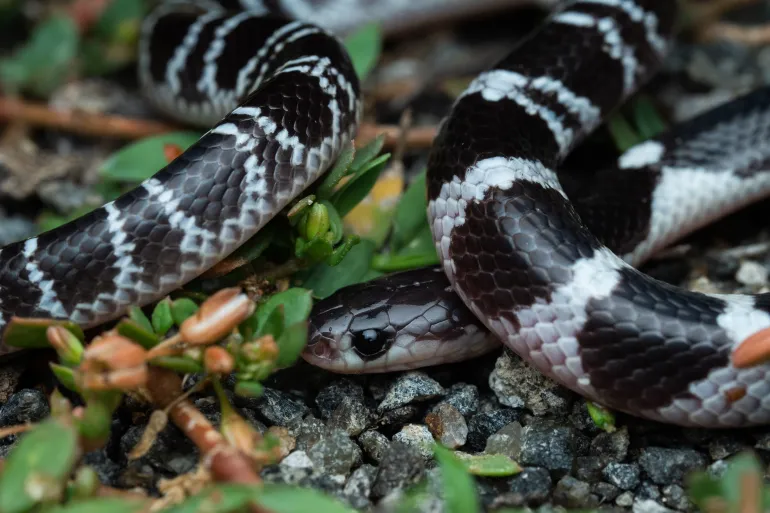
Voices from the Ground: The Human Cost
The narrative of Kabiraj Kharel, a farmer from Nepal, brings a harrowing personal dimension to the statistics. Bitten by a krait while farming, Kharel's account of the ordeal highlights the acute dangers and the terrifying immediacy of venomous snakebites.
Recounting his terrifying encounter Kharel said, "I thought I was going to die." His narrative of the frantic rush to a hospital, over 25 kilometers away, after the snakebite, highlights the acute challenges in accessing timely medical aid in rural areas.
Dr. Sadanand Raut, a medical expert and snakebite prevention advocate from India, emphasizes the urgency of timely medical intervention. The effectiveness of antivenom, a life-saving treatment derived from the very poison that threatens lives, can mean the difference between life and death.
However, the availability of this antidote is hindered by high costs, lack of refrigeration facilities, and inadequate production capabilities, particularly in rural areas where snakebites are most prevalent.
READ NEXT: THE DEADLIEST SNAKES IN AFRICA
The Bigger Picture: Ecological and Economic Implications
Beyond the immediate threat to human life, the rise in snakebites poses broader ecological and economic challenges. Snakes play a pivotal role in the ecosystem, primarily through their control of rodent populations, which are known to destroy significant portions of agricultural yields. The decline in snake populations, therefore, can lead to uncontrolled rodent growth, impacting food security and livelihoods.
Conservation biologist Michael Starkey points out that climate change and human encroachment on natural habitats not only displace snake populations but also disrupt the delicate balance of local ecosystems. The construction of urban infrastructure, for example, encroaches on the natural habitats of snakes, increasing the likelihood of encounters.
"Rising temperatures...are known to make habitats for some species of snake unsuitable for them," he explains, illustrating how environmental changes force snakes into closer contact with humans.
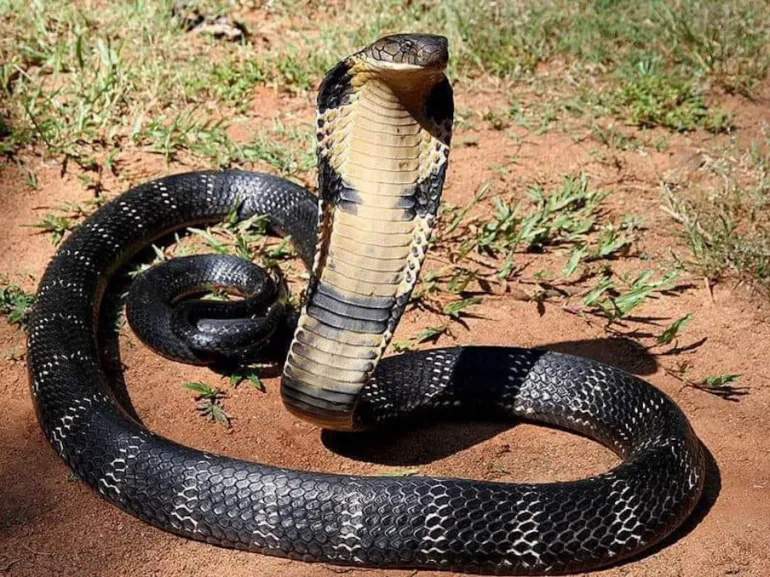
Forging Paths to Coexistence
The path forward requires a multi-faceted approach. Awareness and education about snakebite prevention and treatment need to be ramped up, especially in rural and tribal areas. Infrastructure improvements, such as the local production and distribution of antivenom, along with better healthcare facilities, could significantly reduce mortality rates.
Rmaah Memon, a physician with insights into the challenges of antivenom distribution, argues for better accessibility and production of antivenom. "Antivenom is very expensive so making it more affordable would also be a step in the right direction," she notes, addressing one of the many facets of the comprehensive response required.
Moreover, a shift in perspective is essential. Snakes, often vilified and feared, are crucial for the ecological balance. Educating communities about the ecological benefits of snakes and promoting coexistence can help mitigate conflicts.
READ NEXT: THE MOST VENOMOUS SNAKES IN AUSTRALIA
The snakebite crisis in South Asia is a complex interplay of environmental changes, human activity, and socio-economic factors. As the region grapples with this escalating challenge, the global community must lend its support to local efforts.
Only through sustained and cooperative endeavors can we hope to address this public health issue, ensuring safer futures for both human and snake populations alike.
What are the most venomous snakes in South Asia?
South Asia, known for its rich biodiversity, is home to some of the world's most venomous snakes.
These snakes pose significant risks due to their potent venom, which can cause severe medical emergencies.
Here are the ten most venomous snakes in this region:
- Indian Cobra (Naja naja) - Also known simply as the cobra, this snake is feared for its ability to deliver a neurotoxic venom that can cause paralysis and respiratory failure.
- Common Krait (Bungarus caeruleus) - The krait's venom is highly toxic, primarily neurotoxic, and even small amounts can cause severe muscle paralysis.
- Russell’s Viper (Daboia russelii) - Known for causing the most snakebite fatalities in India, its venom can lead to severe bleeding disorders, kidney failure, and pain.
- Saw-Scaled Viper (Echis carinatus) - This viper's venom is particularly haemotoxic, leading to extensive bleeding and tissue damage.
- King Cobra (Ophiophagus hannah) - The largest venomous snake, the king cobra's neurotoxic venom can kill a human within hours if untreated.
- Hump-Nosed Pit Viper (Hypnale hypnale) - Although smaller, this viper's venom can cause severe swelling and bleeding, and its bites are often underestimated.
- Indian Krait (Bungarus fasciatus) - Another krait species, known for its highly potent venom which is primarily neurotoxic.
- Green Pit Viper (Trimeresurus spp.) - These vipers, found across various habitats, deliver a venom that can cause prolonged bleeding and necrosis.
- Banded Krait (Bungarus fasciatus) - Easily recognized by its distinctive yellow and black bands, its venom is highly neurotoxic.
- Bamboo Pit Viper (Trimeresurus gramineus) - While less aggressive, the venom of this snake can cause significant haemotoxic effects.
These snakes, while dangerous, are critical to their ecosystems and often only pose a threat when provoked or accidentally encountered. Effective medical treatment and education about these snakes can help mitigate the risks associated with their bites.
Aussie-Born Captive Cheetah Released In Africa For The First Time
April 16, 2024
From Sydney to South Africa, a New Chapter for Cheetah Conservation
In a heartwarming leap towards innovative conservation, Edie, a 1.5-year-old cheetah born in captivity in Sydney, Australia, has taken her first free steps in the wild expanses of South Africa's Mziki Private Game Reserve.
This event marks a pioneering moment in the field of wildlife conservation, focusing on the importance of genetic diversity and species revival. The relocation of Edie from the confines of the Wild Cat Conservation Centre to the savannas of Africa narrates a compelling story of hope, challenge, and a new strategy in conserving one of the planet's fastest mammals.
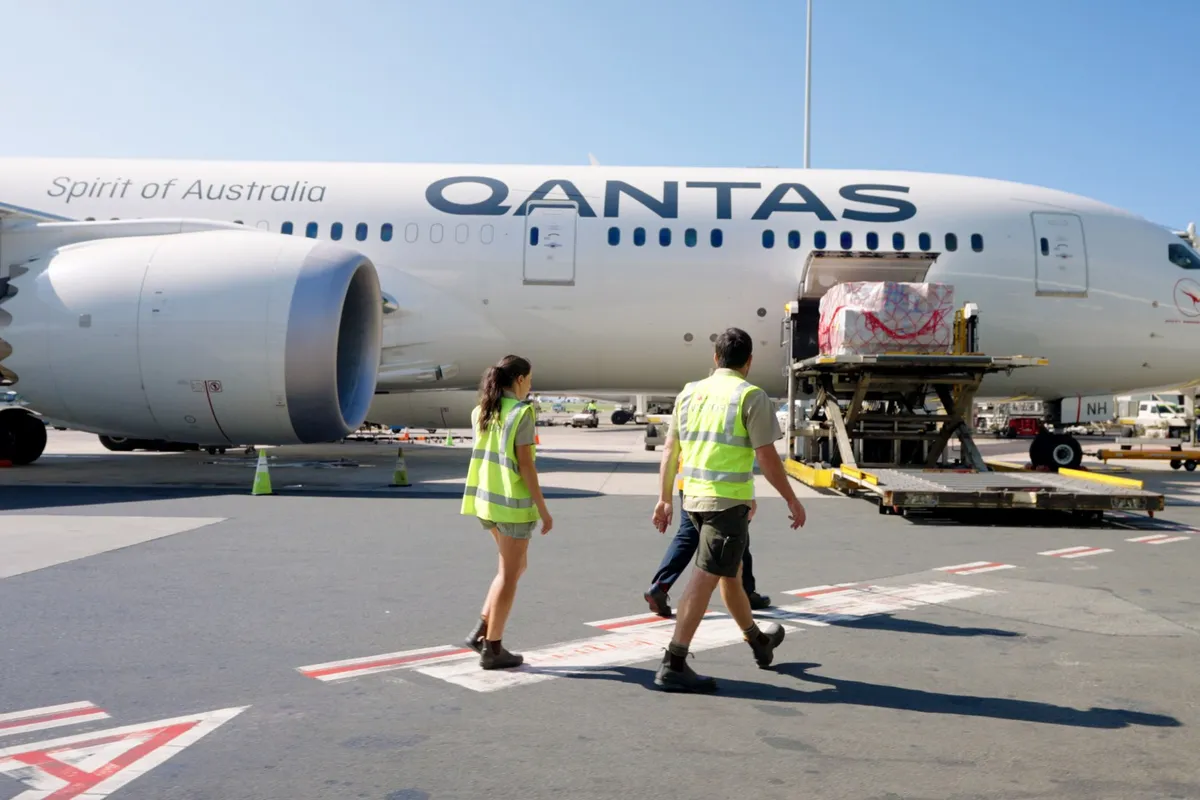
The Beginning of Edie’s Journey
Edie's life began under the careful supervision of conservationists at Sydney's Wild Cat Conservation Centre. Born in September 2022, she represented a beacon of hope—a living symbol of what might be possible in the realm of species preservation. Her journey from Australia to Africa was facilitated by a coalition of conservation bodies including the Wild Cat Conservation Centre, WeWild Africa, The Aspinall Foundation, The Metapopulation Initiative, and Mziki Private Game Reserve.
Tony King, the Conservation and Reintroduction Coordinator for The Aspinall Foundation, shed light on the rigorous preparations undertaken to equip Edie for the wild. "The transition from a zoo environment to the wild requires significant adjustments. We worked on enhancing Edie's physical fitness and adjusting her diet. More crucially, we had to fine-tune her innate predatory instincts, which are vital for her survival in the wild," King explained.
Watch the moment Edie was released into her new home in South Africa’s Mziki Private Game Reserve. Credit: Wildcat Conservation Centre & Wewild
Preparation for a Wild Life
The preparations for Edie's rewilding were extensive and carefully planned. Her training involved altering her diet from prepared meals to raw, whole carcasses, simulating the conditions she would face in her natural habitat.
Her trainers also introduced controlled live prey hunts to sharpen her hunting techniques. "Cheetahs have innate predatory skills that need honing. They must learn how often to hunt, optimizing their energy use in the wild, which is vastly different from the frequent feeding schedules in captivity," King noted.
Strategic Habitat Selection
Choosing an ideal release location was paramount. The selection criteria were stringent, avoiding regions populated by apex predators like lions and hyenas, which pose significant risks to a reintroduced cheetah. "Our site selection process is critical.
We ensure that each location offers the best possible chance for survival and integration into existing wildlife populations," King elaborated. Mziki Private Game Reserve was selected for its favorable conditions and the absence of competing large predators, providing Edie a real chance at establishing herself.
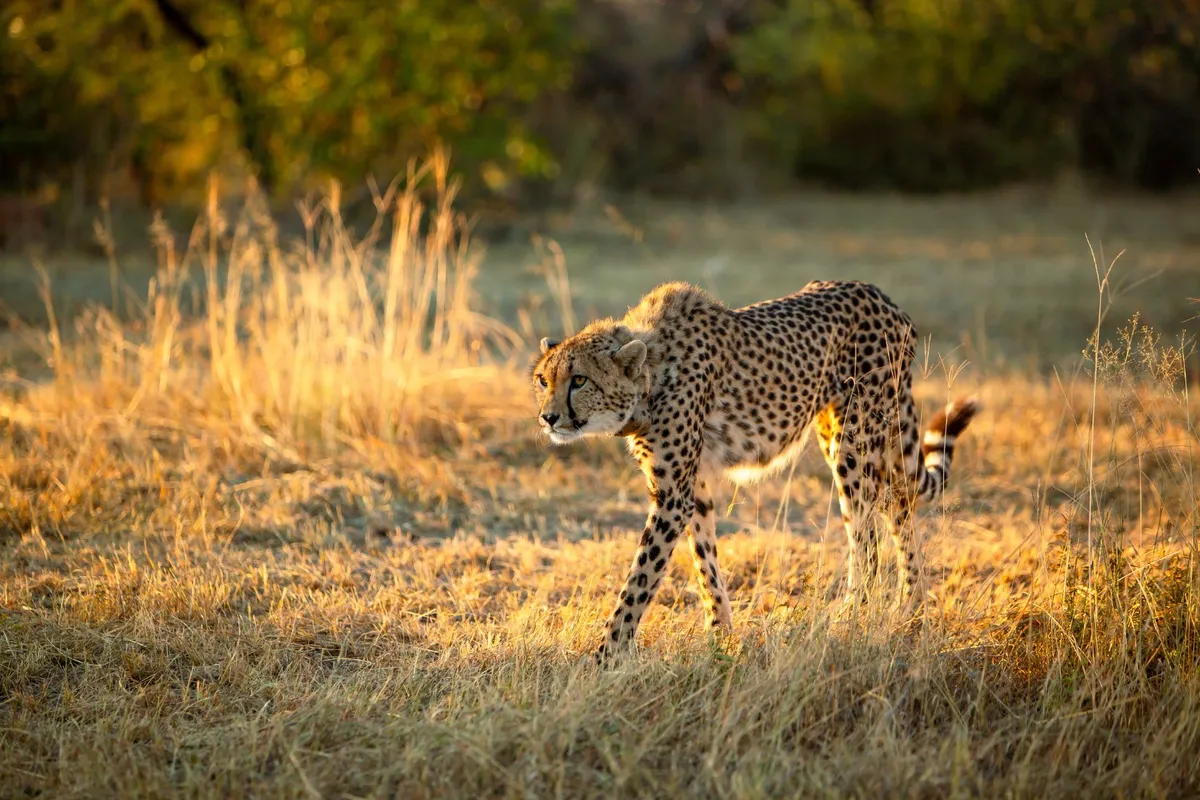
The Broader Conservation Impact
The decline in global cheetah populations has been alarming, with the species now listed as Vulnerable on the IUCN Red List. Current estimates suggest that only about 7,000 cheetahs remain in the wild. The loss of habitat, human-wildlife conflicts, and poaching have decimated their numbers. Initiatives like Edie's reintroduction aim to bolster genetic diversity and strengthen the genetic pool of the wild populations.
"Genetic diversity is crucial for the health and resilience of any animal population. By introducing genetically distinct individuals like Edie into the metapopulation, we're not just saving a single animal—we are enhancing the entire species' ability to adapt and survive," King asserted.
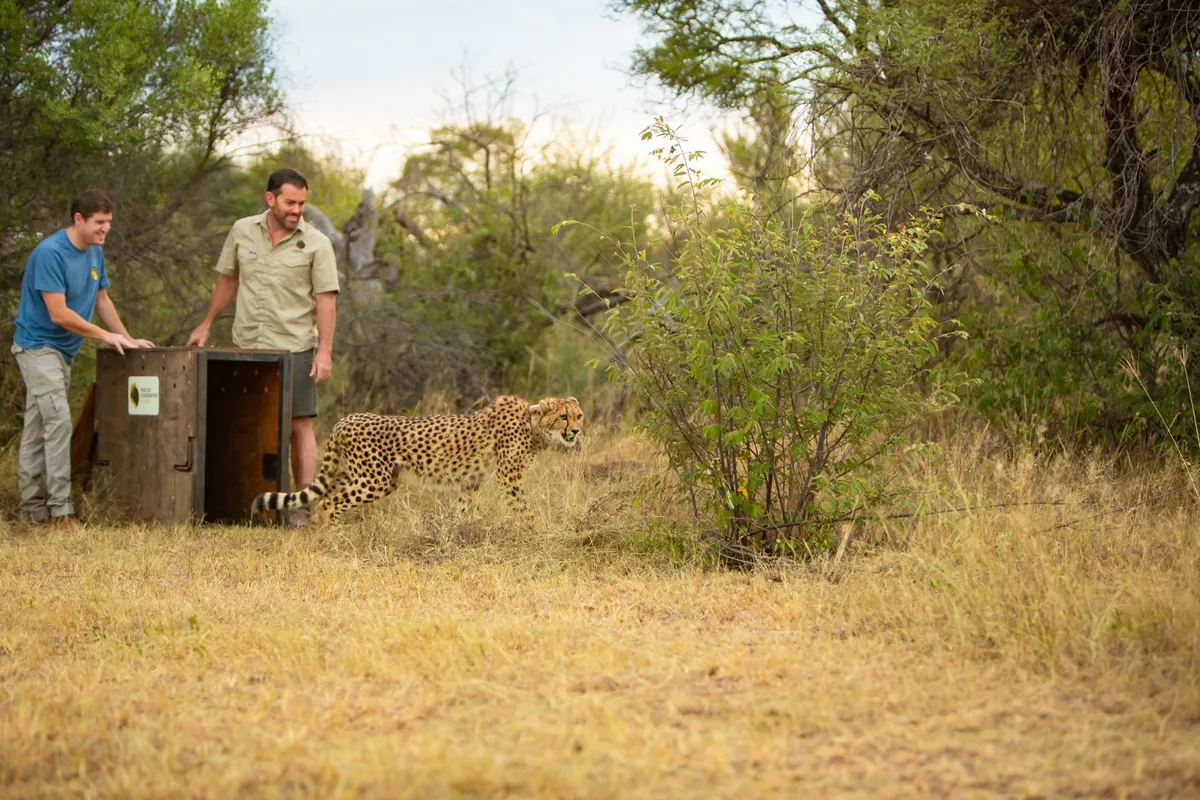
Looking to the Future
As Edie adapts to her new environment, conservationists eagerly anticipate her contribution to the gene pool, particularly through future offspring. "The real success will be witnessed in the survival and integration of her future cubs into the African cheetah population, spreading her unique genetics across the metapopulation," said King.
Edie’s relocation from Sydney to South Africa symbolizes more than just a physical journey—it represents a paradigm shift in conservation strategies, emphasizing a holistic approach that includes genetic health, suitable habitat selection, and careful monitoring. As she explores her new home, Edie carries with her the hopes of conservationists and animal lovers worldwide, serving as a living bridge between continents and cultures in the shared mission of wildlife preservation.
Reflecting on Edie's story, it's evident that the future of wildlife conservation hinges on innovative approaches like these. By moving beyond traditional methodologies and embracing global collaboration and genetic management, we can hope to see a future where humans live in harmony with, and not at the expense of, our planet's remarkable creatures. Edie’s journey inspires us to think differently about how we interact with and protect our natural world.

